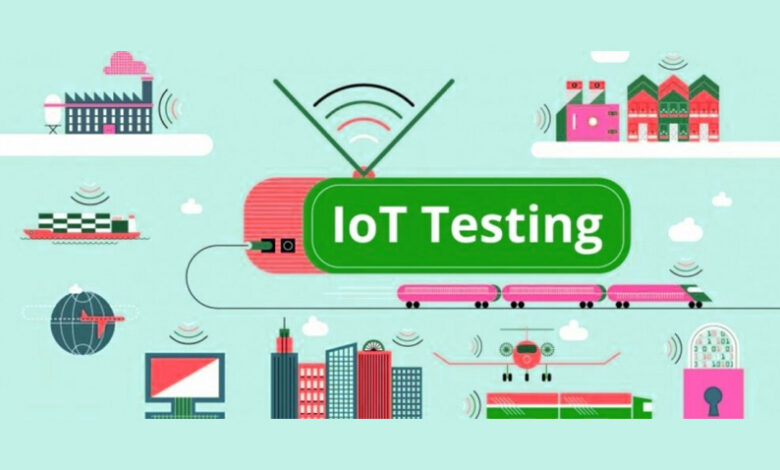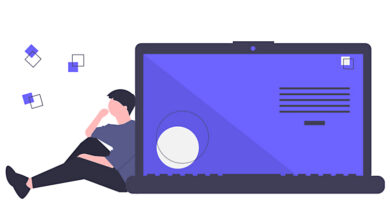The Internet of Things: The Crucial Role of IoT Testing

In the not-so-distant past, the mobile market experienced an explosive boom, introducing a plethora of devices and applications. With a focus on a wide range of devices, the development and testing of mobile systems became a dominant trend. However, a new player emerged on the technological stage – the Internet of Things (IoT). In this article, we will explore what IoT is, its impact on modern life, and the critical importance of testing in ensuring the functionality and security of IoT devices.
Understanding IoT:
The Internet of Things, or IoT, is a revolutionary concept that involves connecting everyday objects to the internet. Imagine having your coffee maker or washing machine linked to the internet, allowing you to manage and analyze their functions through a specialized application. Whether it’s monitoring your heartbeat with a smartwatch or controlling the lighting in your home with a mobile app, IoT has infiltrated various aspects of our lives, transforming ordinary items into smart, connected devices.
Why IoT Testing Matters:
Despite the convenience and innovation IoT brings, there are several key aspects that demand meticulous testing to ensure the reliability and security of these interconnected devices.
1. Usability:
The effectiveness of IoT products hinges on usability. Many devices are compact and feature only a few buttons, necessitating usability testing tailored to their specific capacities and purposes. Ensuring a seamless user experience is paramount for the widespread adoption of IoT devices.
Usability testing involves assessing how easily users can interact with and navigate through an IoT device’s interface. This includes evaluating the clarity of instructions, the intuitiveness of controls, and overall user satisfaction. For example, a smartwatch with a limited number of buttons should be tested to ensure that users can easily navigate its functions, such as monitoring their heartbeat or tracking the length and speed of their run.
2. Number of Available Devices:
IoT encompasses a vast array of devices, each with its unique hardware and software configurations. The challenge lies in testing the compatibility and functionality of these diverse devices, considering the multitude of firmware, operating systems, and their potential combinations.
Device compatibility testing involves assessing how well an IoT application or system performs across a range of devices. Testers need to consider the different screen sizes, resolutions, and hardware specifications of various devices to ensure a consistent and reliable user experience. This is particularly crucial as users may have different IoT devices, from smart refrigerators to thermostats, all connected to the same network.
3. Internet Connection:
The variable nature of internet connectivity poses a significant challenge in IoT testing. Networks may differ in reliability, and functional and performance testing must be conducted with diverse user scenarios to account for these disparities.
Internet connection testing involves evaluating how well an IoT device performs under different network conditions. This includes testing functionality in scenarios with varying internet speeds, as well as assessing the device’s response to connection interruptions and reconnecting seamlessly. Testing under unreliable network conditions is crucial as IoT devices may operate in environments with intermittent or low-quality internet access.
4. Security:
With the interconnectivity of devices comes an increased risk of security breaches. IoT devices are potential targets for cyber threats, making security testing a critical component of the development process. Ensuring data encryption, secure communication, and resistance to hacking attempts is paramount for safeguarding user information.
Security testing in the context of IoT involves identifying and addressing vulnerabilities that could be exploited by malicious actors. This includes evaluating the effectiveness of encryption methods, the resilience of communication channels, and the device’s resistance to common cybersecurity threats. Additionally, testing should assess how well the device handles user authentication and authorization to prevent unauthorized access.
5. Communication Protocols:
IoT devices rely on communication protocols to interact with controllers and other devices. Common protocols include CoAP, MQTT, and XMPP, each with its own advantages and drawbacks. Testing should consider these protocols to ensure seamless communication and functionality during web testing.
Communication protocol testing involves assessing how well an IoT device communicates with other devices and controllers using specific protocols. This includes evaluating the device’s ability to send and receive data, maintain a stable connection, and respond appropriately to various communication scenarios. Testing in this area is crucial to guarantee that the device can effectively integrate into an IoT ecosystem and communicate with other devices on the network.
As the Internet of Things continues to integrate into our daily lives, the importance of comprehensive testing cannot be overstated. Usability, device compatibility, internet connectivity, security, and communication protocols are all integral aspects that demand careful consideration during the testing phase. Testing not only guarantees the reliability of IoT devices but also ensures the safety and satisfaction of users in this interconnected digital landscape.
As IoT evolves, so must our testing strategies to navigate the challenges and maximize the potential of this transformative technology. Thorough testing practices contribute to the seamless integration of IoT into our daily lives, fostering a secure and efficient digital ecosystem where users can trust the reliability and security of their interconnected devices. In embracing the critical role of testing, we pave the way for a future where the Internet of Things enhances our lives without compromising on functionality or security.



